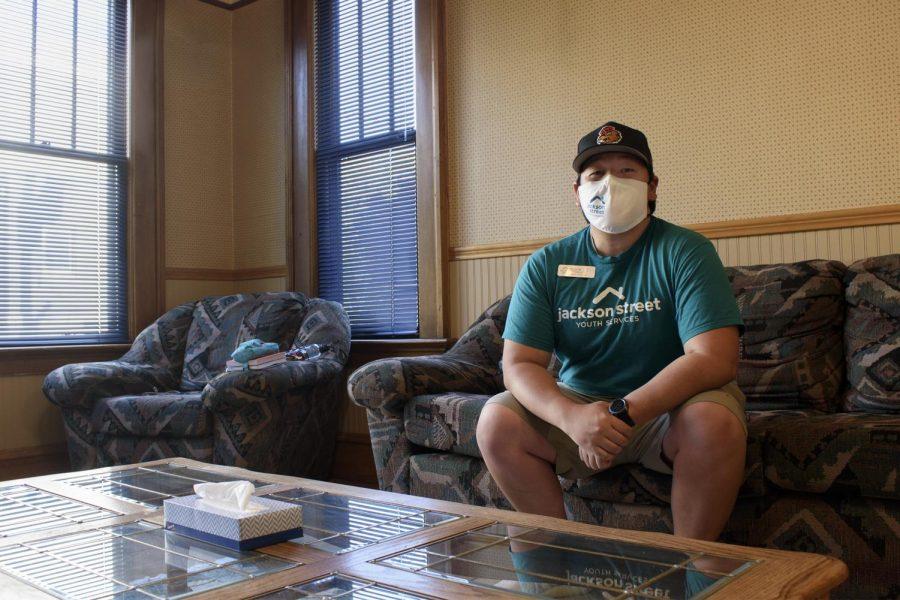As college students continue to face homelessness, resources are available
May 3, 2021
Clarification: This story has been edited in order to clarify that at the time of Kayla Rose’s experience with houselessness, resources were not available or she didn’t meet certain requirements at the time.
Homelessness has proven to be an intense nationwide problem—one which Corvallis and Oregon State University and its students aren’t exempt from.
According to Ann Craig, executive director of Jackson Street Youth Services, one in ten young adults from the ages of 18 to 24 experience homelessness unaccompanied by a parent or guardian over the course of a year.
“Although every story is different, there are common paths to homelessness,” Craig said in an email. “The majority of homeless youth have either run away, been kicked out of unstable home environments, abandoned by their families or caregivers, involved with public systems (foster care, juvenile justice and mental health) or have a history of residential instability and disconnection.”
College students often fall into the young adult age group, and some experience homelessness while attending school. Craig said the issue also disproportionately affects young people of color and LGBTQ+ community members.
Though there is a lack of recent homelessness statistics concerning OSU students, Craig said she believes the problem to be “significant.”
Basic Needs Navigator for the Human Services Resource Center Miguel Arellano said close to 40% of students face some type of basic need insecurity, whether it be related to housing, food or something else.
“I think college students are facing this issue because the cost of tuition is just going up, the cost of education [and] the cost of living keeps going up, [and] financial aid is not keeping up,” Arellano explained. “There’s just a lot of contributing factors that are making this even more prevalent today.”
Recently graduated Kayla Rose was one of the OSU students who experience homelessness every year. Rose received her bachelor’s degree in human development and family sciences in March 2020, and while attending university, she struggled with housing insecurity.
Rose was houseless right before she came to OSU from January to September of 2016 and found shelter through Community Outreach, Inc., a non-profit which provides housing, medical treatment and other resources in Corvallis. She was able to find long-term housing outside of the shelter only because she received financial aid when she began classes in the fall of 2016.
While attending OSU, Rose was technically homeless in the summer of 2017, because she wasn’t able to find stable and adequate housing. She lived with friends for a couple months and they didn’t have any power.
At the time, Rose said she wasn’t aware of resources OSU has to offer for houseless students, like the HSRC. Instead, she struggled to figure things out on her own.
“I was living off of the financial aid, so when it ran out I just kind of had to figure it out,” Rose said.
On top of the stress of being a college student, Rose also had to deal with the strain of being homeless, and this often left her feeling uncertain about continuing her education.
“It was just a general feeling of like not really sure if you should still be going to college because you’re homeless and it would probably be better to just go get a job and not go to college,” Rose said.
Ultimately however, Rose graduated, and she now is working toward becoming a Department of Human Services child care provider.
Rose said she feels like OSU could improve its resources for houseless students by providing more funding to the HSRC and making their services more accessible, particularly for students who can’t drive or don’t have access to transportation.
“I think it would help if all the departments had all the information about resources for low-income students,” Rose said. “It would have helped me if my academic advisor, disability services advisor and CAPS counselor all had that information.”
At the time of Rose’s experience, some of these resources were not available or she didn’t meet the age qualification for Jackson Street Youth Services. For those who meet the age qualification, Jackson Street Youth Services are available and now the HSRC is focusing more on helping college students with houselessness.
Jackson Street helps houseless youth ages 10 to 24, and for older youth, they have a program called Next Steps.
“Next Steps is our transitional living program which provides older youth with long-term apartment-style housing and support services,” Craig explained. “There are currently three possible ‘tiers’ that youth can enter, depending on age, skills, need and availability of units within our program. While personalized for individual youth, the goal is always gradual independence and ultimately, self-sufficiency.”
At the HSRC, on-campus emergency housing is available for students experiencing homelessness. Students can utilize it for up to 28 days at no cost. Within that time span, Arellano works with them in a case-management role to help them identify financial resources they can use to find permanent housing.
There are also funds available through the HSRC for students who are in need of temporary housing before they can secure more stable, long-term housing.
Additionally, Arellano helps students navigate financial aid resources, because additional aid is often what students need to find stable housing, since many struggle with paying first month’s rent and a security deposit all at once.
“When students are homeless, oftentimes they’re also lacking other basic needs,” Arellano said.
From emergency housing and food support to laundry facilities and textbook assistance, the HSRC helps students with a variety of expenses which can sometimes cause financial stress.
There are many ways for college students to get involved and help with the homelessness issue in the community, according to Craig and Arellano.
Jackson Street has a variety of volunteer opportunities, and donations and fundraisers on its behalf are always helpful.
Arellano said the first step in assisting with the issue is to openly discuss access to basic needs. Having these discussions decreases stigma and opens doors for more people to become aware of available resources.
Policy work is also a tangible way students can help. For example, House Bill 2835 would provide and fund a basic needs navigator for every university and community college in Oregon through state funding, rather than student fees. Arellano said reaching out to elected representatives and pushing for this bill can help hundreds of students across the state.












































































































